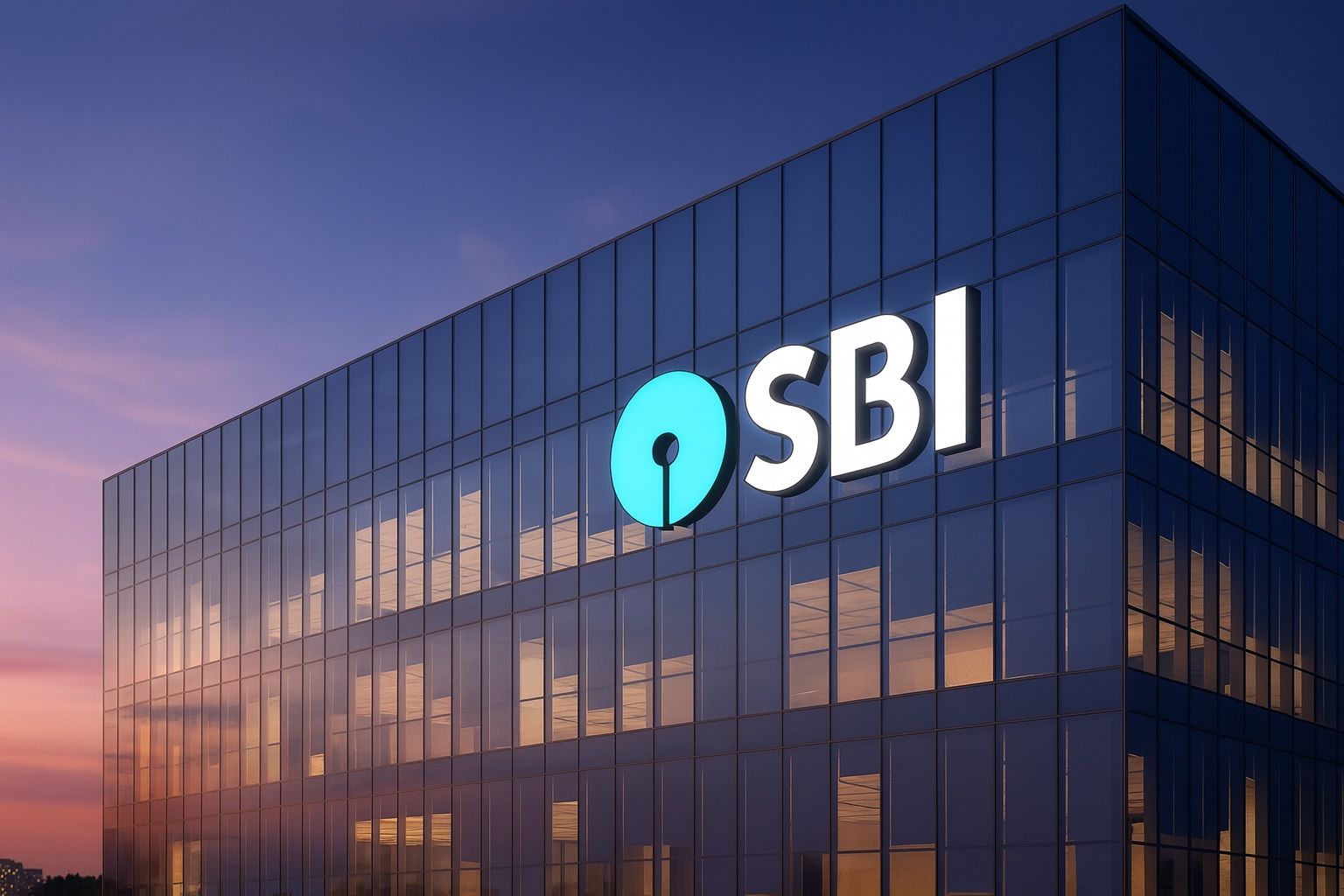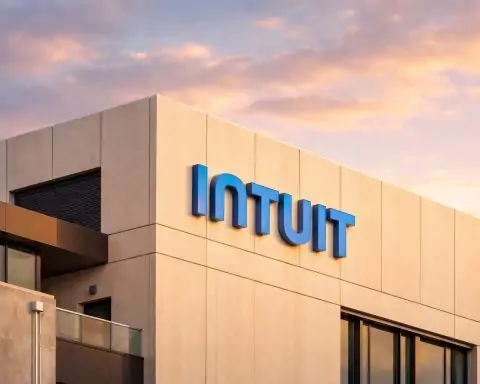- State Bank of India (SBI) soars to a fresh 52-week high: SBI’s share price hit ₹913.65 intraday on Oct. 20, 2025, its highest ever [1], before closing around ₹907 (up ~2.1% for the day) [2]. This marks the fourth straight session of gains, pushing Indian indices near record territory.
- India’s largest bank by market cap: SBI’s market capitalization now tops ₹8.3 lakh crore (₹8.37 trillion) – about $95 billion [3] – placing it among the six most-valued firms in India [4]. Robust trading volumes (13.5 million shares on Monday vs ~10.5 million 20-day avg) accompanied the breakout [5] [6].
- Earnings optimism fuels the rally: A flurry of better-than-expected bank results over the weekend spurred buying. The PSU Bank index jumped 2.9% on Monday – its best in four months – after strong Q2 earnings from lenders like Punjab National Bank (+3.9%) [7]. SBI “rode the optimism” with a ~2% gain [8] as investors anticipate similarly solid results from India’s largest lender.
- Analysts split on outlook: Bulls tout SBI’s strong fundamentals and see more upside – Citi just re-initiated coverage with a ₹1,050 target (≈20% upside) [9], and CLSA calls SBI “truly valuable” with potential to breach a $100B market cap soon [10]. Bears urge some caution, noting margin pressures from RBI’s rate cuts and global risks. Citi warns that any deterioration in asset quality or NIM (net interest margin) compression could cap gains [11].
- Key levels and next triggers: Technically, SBI’s decisive break above the ₹900 resistance signals bullish momentum; the next hurdle is around ₹920 [12]. On the downside, immediate support lies near ₹875 [13]. All eyes are now on SBI’s Q2 FY26 earnings (due in early November) – a strong report could extend the rally, while any disappointment may test investors’ resolve.
Stock Snapshot: New Highs and Solid Stats
SBI’s stock has been on a tear in recent days. On October 20, it surged over 2%, briefly touching ₹913.65 – a new 52-week and all-time high [14] – before settling just above ₹907 [15]. This extends a steady uptrend (the stock is up ~2.8% over the last four sessions alone) and puts SBI about 8-9% higher than its level a year ago [16]. The rally helped SBI reclaim a market capitalization north of ₹8 trillion, firmly solidifying its status as India’s largest bank. As of Monday, SBI’s market value stood around ₹8.37 lakh crore (approximately $95 billion) [17], one of only a handful of Indian companies to cross the ₹8T milestone [18].
Investor participation has been robust. Turnover spiked as the stock broke out to new highs – over 1.35 crore shares traded on NSE/BSE Monday, well above the 20-day average (~1.05 crore) [19] [20]. This indicates strong buying interest accompanying the move. SBI’s liquidity and huge float (the government still holds ~55% stake) make it a bellwether; it is a core component of the Sensex and Nifty indices, so its rise provides a meaningful boost to broader market indices as well. In fact, the BSE Sensex and Nifty 50 both hit one-year highs on Oct. 20 alongside SBI [21].
From a technical analysis perspective, SBI’s breakout above the ₹890-900 zone is significant. Analysts note that ₹898 was a key resistance – the upper end of its recent range – and clearing it triggered a “sharp breakout” [22]. The stock even pierced through its next major resistance around ₹907-908 intraday [23], signaling strong momentum. If the price sustains above ₹900, chartists say the door opens for a move toward ₹920+ in the near term [24] [25]. On the flipside, immediate support is seen around ₹875, with stronger floor around ₹862 if a pullback occurs [26]. Those levels correspond to prior demand zones and the stock’s short-term moving averages. In short, SBI is in a confirmed uptrend, though some consolidation after the sharp jump can’t be ruled out.
Valuation-wise, SBI’s rise has inched its metrics higher but still reasonable relative to historical norms. At ₹907, the stock trades around 10.5× trailing earnings and 1.7× book value [27] – on the higher side of its 5-year P/B range, yet not exorbitant for a dominant bank. SBI’s earnings per share over the last 12 months were about ₹86 [28], and its book value per share is roughly ₹528 [29] (boosted by recent capital infusions and retained profits). With a 1.7% dividend yield [30] and improving asset quality, many analysts view SBI’s valuation as fair given its size and market leadership. “It’s priced at high valuations for a PSU bank, but supported by superior financial strength and growth trends,” notes Moneycontrol’s stock insight report [31].
What’s Driving the Price?
Stronger-than-expected bank earnings have been the immediate catalyst for SBI’s latest surge. Over the weekend, several Indian banks – especially public-sector lenders – posted quarterly results that beat street estimates or showed healthy trends, lifting sentiment across the sector. On Monday, the Nifty PSU Bank index jumped nearly 3%, its best single-day gain since June [32]. Notably, Punjab National Bank (PNB) reported earnings that impressed the market, sending its stock up 3.9% [33]. As the country’s largest bank, SBI benefited from the positive read-through: “SBI, India’s largest lender, rode the optimism to a 2.1% gain” after PNB’s results [34]. In other words, investors are betting that SBI’s upcoming numbers will echo the strength seen at PNB and other peers.
Indeed, despite concerns of a mild slowdown, many Indian banks are still churning out solid profits. Even HDFC Bank, a top private-sector peer, hit a record high last week after reporting stable growth and improved asset quality [35]. By contrast, fears that higher interest rates or a weak loan cycle would dent banks’ earnings are easing. The Reserve Bank of India’s aggressive rate cuts earlier in 2025 (100 bps total easing) had raised worries about NIM compression, since banks lowered lending rates faster than deposit rates [36]. Analysts initially forecasted that sector-wide bank profits could fall ~7–12% year-on-year in Q2 FY26 [37] due to tepid loan demand and squeezed margins. But the early results paint a more optimistic picture – some state-run banks are actually surprising to the upside, thanks to lower credit costs and steady business momentum. This swing from caution to optimism has provided a tailwind for SBI’s stock.
SBI-specific developments have also bolstered investor confidence. Last month, SBI completed the sale of part of its stake in Yes Bank to Japan’s SMBC, a move that added roughly ₹8,889 crore to SBI’s coffers [38]. SBI sold a 13.18% stake in Yes Bank for ₹21.5 per share, cutting its holding to about 10.8% [39]. This deal unlocked capital and is estimated to add 2–3% to SBI’s book value, directly boosting valuations [40]. It also signals SBI’s ability to monetize investments prudently – the Yes Bank stake was part of a rescue plan and SBI is now profitably paring it down with regulator approval. After the sale, SBI’s market cap decisively climbed back above ₹8 trillion [41]. “Latest stake sale adds 2–3% to SBI’s book value, boosting valuations,” India Today noted [42] [43]. Investors took this as a sign of SBI’s strengthening capital position (further reinforced by a ₹25,000 crore capital infusion in July 2025) [44]. A stronger capital base means SBI can comfortably meet credit demand and regulatory requirements, supporting future growth.
Macro-economic factors are at play too. The broader market mood has improved with easing global jitters and supportive domestic policies. Fears of rising oil prices and U.S. interest rates, which spooked equities earlier, have receded somewhat. In mid-October, Indian stocks had slid amid global trade tensions and FII outflows [45] [46], but by Oct. 20 the tide had turned. “Domestic markets will reverse their underperformance over global peers as optimism is gradually returning, and the stage is set for recovery as valuations are reasonable and earnings downgrades have bottomed out,” said Amisha Vora, Chairperson of PL Capital [47]. Her upbeat view underscores that India’s economic fundamentals – moderating inflation, still-healthy GDP growth, and recent tax cuts – are kicking in. Notably, the government’s late-September tax relief measures (e.g. cutting certain corporate levies) helped fuel a rally in bank and auto stocks [48]. Additionally, the RBI’s monetary policy stance remains accommodative: the central bank not only cut the repo rate multiple times this year (down to 5.50% [49]), but even reduced banks’ Cash Reserve Ratio (CRR) recently to boost liquidity [50]. SBI, with its massive deposit base, benefits from any CRR cut as it frees up funds. ICICI Securities cited “the positive impact of upcoming interest rate cuts, GST reforms, festive season credit demand, and the benefits of the recent CRR cut” as reasons for making SBI a “top pick” in the sector [51].
It’s also worth noting that foreign investor sentiment towards Indian banks has improved. Global ratings agency S&P upgraded India’s sovereign credit outlook for the first time in 18 years (in early September), reflecting confidence in the country’s fiscal and growth trajectory [52]. S&P expects SBI’s risk-adjusted capital ratio to rise to 7–7.5% over the next two years (from ~5.9% in March 2024) amid India’s improved outlook [53]. Meanwhile, after months of outflows, foreign institutions have started nibbling at Indian equities again, drawn by India’s relative resilience. HSBC Global Research recently noted that Indian stocks had underperformed emerging markets by a wide margin in 2024, making valuations more attractive – calling it “the favourable time” for foreign investors to return [54]. With SBI being an FII favorite whenever India is in favor, any revival in foreign inflows tends to lift SBI’s stock. In fact, SBI’s American Depositary (ADR) in the U.S. has also been trending higher, echoing the domestic move.
Bottom line: SBI’s current rally is the product of a confluence of factors – strong peer earnings, a successful stake sale boosting fundamentals, policy tailwinds, and rekindled risk appetite. The market is essentially pricing in that SBI will deliver on growth and asset quality in line with (or better than) expectations in the coming quarters. As we head into the festive season and year-end, banks typically see credit uptake rise (home loans, consumer loans during Diwali etc.), which could further aid performance. SBI’s chairman has also downplayed regulatory concerns, recently stating that new RBI credit-loss provisioning norms (the expected credit loss framework) won’t significantly impact banks thanks to a generous transition period [55]. All these elements are driving a positive narrative around SBI at the moment.
Expert Commentary: Bulls Confident, Bears Wary
Analysts and market experts are understandably focused on whether SBI’s momentum is sustainable. Optimism is high among many brokerage houses. Global investment bank Citi has re-initiated coverage on SBI with a “Buy” rating and a price target of ₹1,050 per share [56] [57]. That target implies over 15% upside from current levels and suggests SBI could cross the psychologically important ₹1,000 mark in the near future. Citi calls SBI its “preferred pick” among Indian public-sector banks, citing multiple growth drivers: improving retail loan traction (especially via its Xpress Credit personal loans and a renewed push in home loans), a robust corporate lending pipeline, and effective control of deposit costs to buffer margins [58] [59]. Essentially, Citi believes SBI will navigate the industry’s NIM pressure better than most, thanks to its low-cost CASA deposit franchise. For FY26-27, Citi projects SBI will achieve 13–14% annual loan growth and maintain NIMs around 2.8–2.9% [60] – a level that indicates stable profitability. They also expect SBI to sustain a healthy Return on Assets ~1.0% and Return on Equity ~14–15% over the next two years [61], which would be among the best in its history for those metrics. If those forecasts pan out, SBI’s earnings and book value would rise substantially, supporting the bullish target price.
Other experts echo positive sentiments. Brokerage CLSA recently described SBI as a “truly valuable” franchise, highlighting that the bank has consistently outperformed its peers [62]. CLSA is impressed by SBI’s stable valuations (the stock hasn’t run far ahead of fundamentals), strong loan growth, and improving asset quality. They even suggested SBI could potentially breach $100 billion in market cap within a year [63] – essentially anticipating continued stock gains that would put it in the elite club of ~$100B banks globally. This bullish view is underpinned by expectations of ongoing economic recovery and credit demand in India.
Domestic brokerage ICICI Securities also has SBI as a top pick, as mentioned earlier. They point to macro catalysts like possible RBI rate cuts in coming months and government reforms (e.g. GST rate tweaks) which could spur consumption, thereby benefiting lenders [64]. The festive season (October–December) is typically strong for loan growth, and preliminary data show credit offtake picking up in retail segments – something ICICI Sec believes will reflect in SBI’s second-half performance. Another tailwind they cite is the CRR cut: the RBI recently lowered the incremental cash reserve ratio that banks had to park (which had been imposed temporarily), effectively injecting liquidity into banks [65]. This frees up more funds for SBI to lend or invest, which is margin-accretive.
Meanwhile, Nuvama Institutional Equities (formerly Edelweiss) provided a measured outlook on SBI ahead of its results. Nuvama analysts expect public sector banks, including SBI, to post healthy loan growth in Q2 FY26, although they caution that net interest margins may see a minor decline due to the cumulative effect of earlier rate cuts [66]. Specifically for SBI, Nuvama projected about 3% quarter-on-quarter loan growth in the September quarter, but possibly a 5-basis-point dip in NIM [67]. Despite this slight margin compression, they note SBI should maintain an ROA above 1%, buoyed by strong core fee income and controlled credit costs [68]. In other words, even if interest spreads tighten a bit, SBI’s profitability metrics remain solid – a reassuring sign.
On the cautious side, a few voices urge investors not to get carried away. The very factors that lifted SBI – like global liquidity and low rates – could reverse. SBI Securities’ own strategists recently commented that the market may stay in consolidation until there’s “clear evidence” of an earnings rebound, and that “only a clear break above key technical levels would revive sustained bullishness.” [69] For the overall market, those key levels have now been breached (the Sensex is above 84,000), but sustaining them is crucial. Amit Jain of Ashika Global warned a few months ago that valuations in the small/mid-cap space were stretched and that fresh money should be selective [70]. While that comment was not specific to SBI, it reflects a broader concern about parts of the market getting overheated. SBI, trading near all-time highs and at 1.7 times book, is not cheap by its historical standards – so any slip in execution could trigger profit-taking.
Crucially, experts flag margin and asset quality risks as two watch areas. The RBI’s 100 bps of rate cuts in 2025 have indeed narrowed banks’ spreads [71]; if deposit rates start rising or loan yields dip further, NIMs could compress more than expected. Citi explicitly listed “lower-than-expected NIMs or asset quality deterioration” as key risks that could lead to higher credit costs and weaker ROA for SBI [72]. While SBI’s bad loans are at multi-year lows (gross NPA was just 1.83% in June 2025, net NPA 0.47% [73]), any sign of stress in its large corporate book or unsecured retail loans would be a red flag. Recently, some uptick in slippages in unsecured retail has been observed industry-wide, though SBI has said credit costs remain under control [74]. Moreover, external risks like global market volatility, oil prices, or geopolitical events can quickly change the sentiment for emerging market banks. A spike in global bond yields or a hawkish surprise from the U.S. Fed could dampen the foreign inflows that have been supporting Indian equities [75]. As TS2.tech’s market commentary put it, “the next few weeks are pivotal” – the rally has been “remarkably bullish,” but stretched valuations and global uncertainties mean one eye should be kept on the exit [76]. It’s a reminder that even bullish investors are cognizant of lurking risks.
In summary, the bulls argue that SBI’s fundamentals and India’s growth story justify the optimism. They see India’s largest bank continuing to deliver steady growth, aided by policy support and its competitive strengths, making current levels a pit stop on the way to ₹1,000+ share price. The bears (or at least the prudent voices) counter that a lot of good news is now priced in, and that the true test will be the bank’s upcoming earnings and its ability to maintain margins in a lower-rate environment. For now, the bullish narrative has the upper hand, but the coming weeks of results will provide more concrete evidence to either validate or challenge it.
Forecast and Investment Outlook
Looking ahead, the consensus is that SBI’s near-term trajectory will hinge on its Q2 FY2026 earnings release (scheduled for the first week of November [77]) and management’s commentary on the business outlook. Many analysts expect SBI to post modest profit growth for Jul–Sep. For instance, one preview estimated SBI’s net profit to rise ~2% year-on-year (or roughly ₹20,000+ crore) on revenue growth of about 7–8% [78]. This tempered growth forecast factors in slight NIM compression and higher operating expenses. If SBI can beat these estimates – say via stronger loan growth or lower provisions – it would reinforce the bull case and likely propel the stock higher. A positive surprise could very well put the ₹1000 level within reach in the coming weeks. On the other hand, if results disappoint (for example, if profits decline or outlook for NIMs is weak), SBI’s stock might see a short-term correction given its recent run-up.
Medium-term, analysts maintain a broadly bullish outlook on SBI, though with moderate return expectations. Citi’s ₹1,050 target by late 2025/early 2026 appears to be a common ballpark – other brokerages have targets in the ₹1,000–1,100 range for the next 12 months, implying ~15–20% upside [79]. Achieving this will require SBI to hit its growth stride: double-digit credit expansion, stable asset quality, and resilience in net interest margins. The bank’s management has guided for credit growth in the mid-teens and has been optimistic about economic trends supporting loan demand (urban consumption, government capex, etc.). If India’s GDP continues to grow ~6%+ and inflation stays under control, banking sector tailwinds should persist. Notably, in the second half of FY26, there is speculation that the RBI could cut rates further if inflation permits – which, while short-term negative for NIM, could significantly boost credit growth and reduce defaults, a trade-off that ultimately benefits big lenders like SBI.
From an investor perspective, SBI offers a mix of value and growth attributes. It’s trading around 1.7 times book, which is higher than most public banks but still much cheaper than top private banks (which trade at 2.5–4× book). Its P/E near 10.5 is also reasonable for a bank expected to generate ~15% ROE. This suggests there is room for valuation re-rating if SBI can sustain ~15% earnings growth and 1%+ ROA consistently. However, upside might be capped if the macro environment turns adverse. One factor to watch is the trajectory of interest rates: should inflation flare up and RBI pivot to hiking again, bank stocks could take a hit. Conversely, a benign rate environment with ample liquidity (perhaps aided by global rate cuts – traders are betting the U.S. Fed will start easing soon [80]) creates a goldilocks scenario for banks – low funding costs and rising loan growth.
On balance, the bullish case for SBI envisions it leveraging its dominant deposit franchise, huge customer base, and improving digital capabilities to grab market share across lending segments (especially as some weaker PSU banks merge or cede ground). With asset quality at its best in decades and credit costs low, most earnings growth should translate to shareholder value. Brokerages like Jefferies and Morgan Stanley, which had been conservative, have acknowledged India’s banks could surprise if credit cycles turn up sharply [81]. Morgan Stanley had trimmed its broader market targets but remained overweight on financials, implying they see banks like SBI as central to India’s equity story [82] [83]. Additionally, SBI’s subsidiaries (in insurance, asset management, credit cards) add significant hidden value – any plans to list or monetize those in future could unlock further upside.
The bearish scenario (or at least a cautious scenario) would emphasize that SBI’s size makes high growth rates hard to sustain. Being the largest lender, it is more tied to the economy – if GDP growth disappoints or credit demand falters, SBI can’t escape unscathed. There’s also the aspect of government ownership: while reforms have made SBI more autonomous, it is still state-run and could be influenced by public-policy goals (like directing credit to certain sectors) which might not always maximize profits. Moreover, one should consider the global context: banking is a cyclical sector, and global banking stocks have had a volatile year. Any resurgence of global banking stress (for example, from higher defaults or liquidity crunches abroad) can spill over. Domestically, competition from private banks remains intense; for instance, ICICI Bank and HDFC Bank continue to grow slightly faster in some segments, and fintech/disruptors are nibbling at edges of banks’ business (though SBI itself has a strong digital platform in YONO).
Investors are thus advised to stay tuned to key triggers: the Q2 and Q3 results, management’s commentary on margins and asset quality, and macro indicators like RBI policy moves or government fiscal actions (there’s speculation of further tax incentives or bank recap measures around the upcoming Budget). For now, the sentiment is clearly positive. As Amisha Vora of PL Capital puts it, India’s market “optimism is gradually returning” and reasonable valuations plus an earnings revival can help domestic stocks “reverse their underperformance” versus global markets [84]. If that scenario plays out, SBI – being a proxy for India’s economy – is well positioned to benefit.
Bottom line: SBI has regained favor with investors, hitting new highs on a wave of banking optimism. Near-term momentum is strong, but forthcoming earnings will be crucial to justify the rally. Most analysts remain bullish, eyeing the ₹1000 milestone next, backed by SBI’s improving fundamentals and India’s growth prospects. Still, prudent investors will keep an eye on potential speed bumps – like interest rate swings or any sign of loan quality issues. In the words of one market strategist, even as the bulls run, “patience is key” and confirmation from actual performance data will be needed for the “sustained bullishness” to continue [85].
Sources: Recent market reports and expert analyses including Reuters, Economic Times, Moneycontrol, and TS2.tech were used to compile this report [86] [87] [88] [89], ensuring an up-to-date and balanced view of SBI’s stock trajectory.
References
1. www.moneycontrol.com, 2. www.reuters.com, 3. www.moneycontrol.com, 4. www.indiatoday.in, 5. www.moneycontrol.com, 6. www.moneycontrol.com, 7. www.reuters.com, 8. www.reuters.com, 9. www.etnownews.com, 10. www.indiatoday.in, 11. www.etnownews.com, 12. www.equitypandit.com, 13. www.equitypandit.com, 14. www.moneycontrol.com, 15. www.reuters.com, 16. www.etnownews.com, 17. www.moneycontrol.com, 18. www.indiatoday.in, 19. www.moneycontrol.com, 20. www.moneycontrol.com, 21. www.reuters.com, 22. www.equitypandit.com, 23. www.equitypandit.com, 24. www.equitypandit.com, 25. www.equitypandit.com, 26. www.equitypandit.com, 27. www.moneycontrol.com, 28. www.moneycontrol.com, 29. www.moneycontrol.com, 30. www.moneycontrol.com, 31. www.moneycontrol.com, 32. www.reuters.com, 33. www.reuters.com, 34. www.reuters.com, 35. www.reuters.com, 36. www.reuters.com, 37. www.reuters.com, 38. www.indiatoday.in, 39. www.indiatoday.in, 40. www.indiatoday.in, 41. www.indiatoday.in, 42. www.indiatoday.in, 43. www.indiatoday.in, 44. www.indiatoday.in, 45. ts2.tech, 46. ts2.tech, 47. www.reuters.com, 48. www.reuters.com, 49. ts2.tech, 50. www.indiatoday.in, 51. www.indiatoday.in, 52. www.reuters.com, 53. www.indiatoday.in, 54. ts2.tech, 55. www.reuters.com, 56. www.etnownews.com, 57. www.etnownews.com, 58. www.etnownews.com, 59. www.etnownews.com, 60. www.etnownews.com, 61. www.etnownews.com, 62. www.indiatoday.in, 63. www.indiatoday.in, 64. www.indiatoday.in, 65. www.indiatoday.in, 66. www.indiatoday.in, 67. www.indiatoday.in, 68. www.indiatoday.in, 69. ts2.tech, 70. ts2.tech, 71. www.reuters.com, 72. www.etnownews.com, 73. www.etnownews.com, 74. www.indiatoday.in, 75. ts2.tech, 76. ts2.tech, 77. scanx.trade, 78. univest.in, 79. www.etnownews.com, 80. ts2.tech, 81. ts2.tech, 82. ts2.tech, 83. ts2.tech, 84. www.reuters.com, 85. ts2.tech, 86. www.reuters.com, 87. www.indiatoday.in, 88. www.etnownews.com, 89. www.reuters.com







